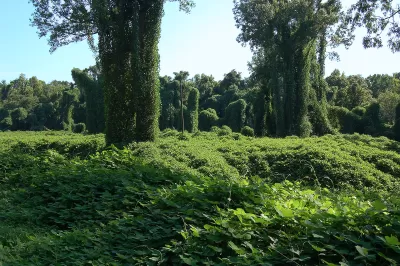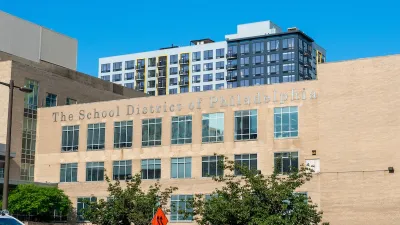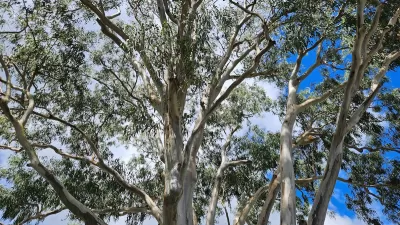Visually striking and aggressively invasive, kudzu has been choking the Southeast for decades. Now, designers, chefs, and activists want to find ways to make it useful.

Writing in Southerly Magazine, Ayurella Horn-Muller describes the influence and potential of an infamous, invasive vine known for choking Southeastern landscapes. Kudzu, a plant with "bristly, yellow-green vines and heart-shaped leaves," covers an estimated 7.4 million acres in the American Southeast and "has a reputation of being aggressively damaging to biodiversity, economies, and ecosystems." Now, writes Horn-Mueller, "after decades of being a thorn in the side of U.S. cities, rural towns, as well as the agriculture, lumber and forest product industries, kudzu’s uses are expanding — now including building materials, cooking, healing, climate action, and even cultural advocacy."
First introduced in the U.S. at the 1876 Philadelphia World's Fair, kudzu was planted decoratively and, later, to prevent soil erosion. Far from its old reputation as "Savior of the South," some are now starting to refer to it as "the vine that ate the South" due to its "ability to grow anywhere, up to a foot per day and sixty feet during the growing season."
Because it chokes the plants around it and can even impact the local nitrogen cycle in the air, kudzu contributes to ozone pollution. Economically, the damage is severe. Controlling the infestation "is already costing the forest product industry $500 per hectare per year," and an AECOM study in Oklahoma projected that the plant's spread "could result in a loss of $167.9 million" over the next five years.
"In lieu of policies to control the spread of the invasive plant, artists, chefs, and designers are finding creative ways to harvest and repurpose the plant." Designers Katie MacDonald and Kyle Schumann, founders of After Architecture, "saw [the plant's] overabundance as a possibility" to develop kudzu and other invasive plants into useful building materials. Restaurants like Kudzu Seafood Company in Macon, Georgia are experimenting with chips and other dishes made from the kudzu root, a popular edible in Japan.
"[Paulina] Harron, the researcher who led the study on the plant’s economic impact, said that these are important steps towards the bigger goal of increasing the public’s knowledge of and participation in invasive species management." While finding new uses for the plant may not mitigate the infestation issue, "using a combination of management methods is useful in controlling their populations."
FULL STORY: The role of kudzu in architecture, cuisine, and culture

Study: Maui’s Plan to Convert Vacation Rentals to Long-Term Housing Could Cause Nearly $1 Billion Economic Loss
The plan would reduce visitor accommodation by 25,% resulting in 1,900 jobs lost.

North Texas Transit Leaders Tout Benefits of TOD for Growing Region
At a summit focused on transit-oriented development, policymakers discussed how North Texas’ expanded light rail system can serve as a tool for economic growth.

Using Old Oil and Gas Wells for Green Energy Storage
Penn State researchers have found that repurposing abandoned oil and gas wells for geothermal-assisted compressed-air energy storage can boost efficiency, reduce environmental risks, and support clean energy and job transitions.

Santa Barbara Could Build Housing on County Land
County supervisors moved forward a proposal to build workforce housing on two county-owned parcels.

San Mateo Formally Opposes Freeway Project
The city council will send a letter to Caltrans urging the agency to reconsider a plan to expand the 101 through the city of San Mateo.

A Bronx Community Fights to Have its Voice Heard
After organizing and giving input for decades, the community around the Kingsbridge Armory might actually see it redeveloped — and they want to continue to have a say in how it goes.
Urban Design for Planners 1: Software Tools
This six-course series explores essential urban design concepts using open source software and equips planners with the tools they need to participate fully in the urban design process.
Planning for Universal Design
Learn the tools for implementing Universal Design in planning regulations.
Ascent Environmental
Borough of Carlisle
Institute for Housing and Urban Development Studies (IHS)
City of Grandview
Harvard GSD Executive Education
Toledo-Lucas County Plan Commissions
Salt Lake City
NYU Wagner Graduate School of Public Service





























